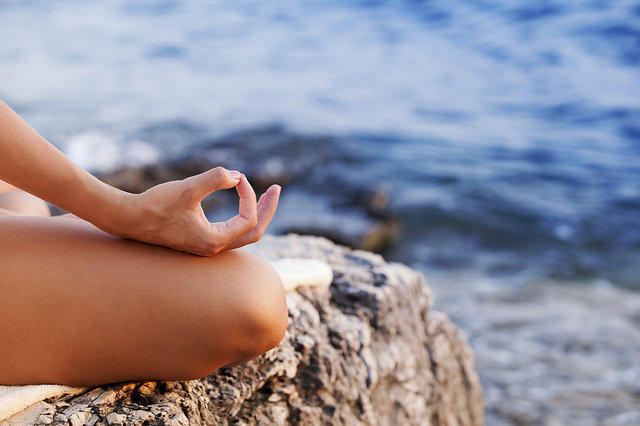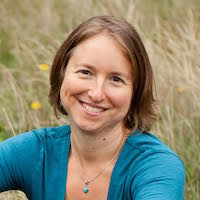I couldn’t stop crying. Lying in my bed in the fetal position, I could hear my friends joking around as they cooked dinner downstairs.
I felt exhausted, awful, and their happy voices just made me feel worse. I was 24-years-old, living in a community of wonderful people who shared my passions and my values, and yet, for no reason that I could name, my life felt like it was spinning out of control.
A few weeks earlier, seemingly without warning, I had spiraled rapidly into deep fatigue, depression, and a whole host of other ailments. I’d had blood tests done, gone to see a series of conventional doctors, and had consultations with alternative practitioners. The diagnosis they’d given me didn’t seem to explain the depth of my fatigue and my relatively sudden emotional dive. I realized that in order to heal I had to shift gears away from simply inquiring into my physical health. I had to consciously open myself into an intimate encounter with every level of my being: body, psyche, emotions and spirit.
Thus began a healing journey that would eventually lead to becoming a naturopathic doctor. I had never planned to be a doctor, but the healer in me had awakened and there was no putting it back to sleep. Even when I could barely get out of bed, I felt compelled to share what I was learning about health and healing with others. I felt truly called to guide others through their own, often lonely and scary, healing transitions.
So I enrolled in a naturopathic doctoral program at Bastyr University and started my own spiritual quest to create a path to health and vitality that takes into account the wholeness and uniqueness of each individual.
Throughout all of this, I’ve come to see the path of health as a sacred journey. “Sacred” isn’t limited to religious or spiritual beliefs and practices. The word “sacred” to me, is about what connects us to the mysterious wonder and awe of life. It is about living in a simple, direct, conscious relationship with the astonishing reality of existence. The territory through which this health journey takes us is not only in the outer world, but also in our own inner landscapes. The healing journey cannot be hurried, and there are no shortcuts—it unfolds in its own time, as our inner vitality slowly matures.
~
One of the most important things you can do for your vagina and your sex life—to avoid a world of problems later? Check out this device and get a free bag of craft coffee (code; EJCOFFEE)>>
~
Living for many years with the ebbs and flows of fatigue felt, for me, like traversing up and down through a mountain range with no path but the terrain itself to guide me. I came to see my health journey as a kind of pilgrimage that required an ongoing surrender and trust in life. Although its forms vary from religion to religion, pilgrimage seems to be a recurring theme found across spiritual traditions: one goes on a long journey rooted in devotion to pay homage to a particular sacred site, or as a rite of passage or a quest to connect with a deeper guidance.
In his book The Pilgrimage, Paulo Coehlo writes:
“When you are moving toward an objective…it is very important to pay attention to the road. It is the road that teaches us the best way to get there, and the road enriches us as we walk its length.”
Step-by-step, the walking reveals the territory. The outer world through which we travel, whether it be the realities of living with a chronic illness, the disruption of an acute injury, or the fluctuating patterns of our sleep or diet, can reflect and reveal the inner territory of our own growth and opening. Even if the journey is not what we expect at the outset, it shows us what is most essential.
It can be so easy in our broader culture to view a “health challenge” as an inconvenience, something to get over. And yet everything from the common cold, to chronic anxiety, to cancer, can also be seen as a generative life force. These experiences change us and guide us to a more awake and intimate relationship with our own life, whether in helping us to slow down and rest when we need to, inquire into what is triggering our emotional reactions, or having us face our own mortality.
The act of walking on our health pilgrimage is a movement of becoming, providing time to nurture a gradual emergence of a new self. Priorities and perspectives shift in our lives with each challenge we face and each new self-care habit we try. Our sense of who we are and what we are capable of takes on new frames of reference outside of the cultural norms, paradigms and assumptions we may have previously been immersed in. We may find ourselves moving beyond limits that had seemed impassable before. We may feel as if we have emerged out of a small room with four walls and a low ceiling into a wide-open landscape under a vast blue sky.
Navigating my pilgrimage of health has been transformative and at the core of my path to a life awakened. This isn’t a traditional pilgrimage that is about paying homage to a sacred deity or place. It is about walking the deeper path—liberating our own well-being and respecting the sacredness of our own life through how we care for ourselves.
As we travel, we learn to honor our own body at every step, nurturing its capacity to carry us. Along the way, we become sensitive to the flow of our energy, allowing our body to rest and renew, and develop the stamina and strength to continue moving forward.
As I’ve healed my own body, I’ve also healed how I show up for myself. In the spirit of pilgrimage, we find that health is not an end destination—it is the journey.
~
Author: Dr. Deborah Zucker
Apprentice Editor: Leah Wallin, Editor: Travis May
Photo: Take Back Your Health












Read 2 comments and reply